-
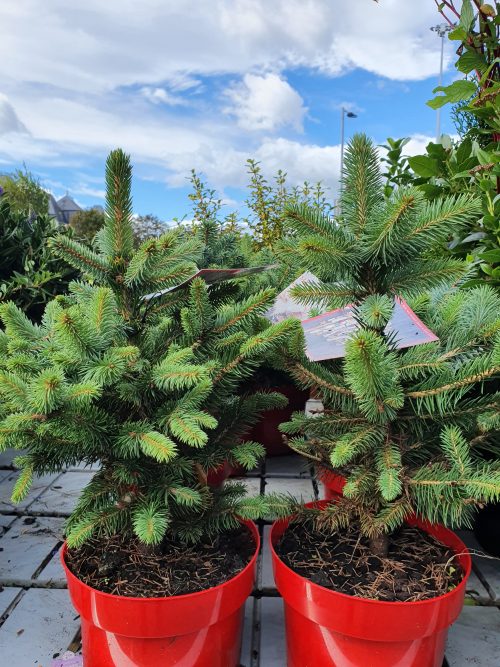
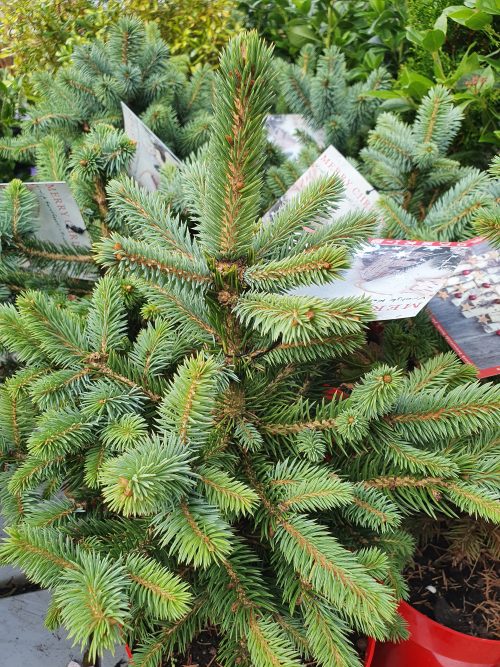 A nice and compact slow growing conifer, which keeps its tight conical shape for many years. Picea glauca is an easy to grow conifer requiring little maintenance, suitable for pots or as a specimen in a shrub bed. With age it will form a 3m tall sturdy looking domed tree. Site: Inland exposed Soil: Well drained, will tolerate acid to alkaline Position: Full sun Season of Interest: Evergreen, nice shape Hardiness: Fully hardy Height: Slowly up to 10ft (3m) in 20-30 years
A nice and compact slow growing conifer, which keeps its tight conical shape for many years. Picea glauca is an easy to grow conifer requiring little maintenance, suitable for pots or as a specimen in a shrub bed. With age it will form a 3m tall sturdy looking domed tree. Site: Inland exposed Soil: Well drained, will tolerate acid to alkaline Position: Full sun Season of Interest: Evergreen, nice shape Hardiness: Fully hardy Height: Slowly up to 10ft (3m) in 20-30 years -
Out of stock
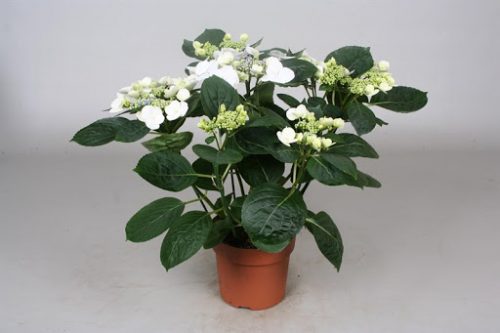
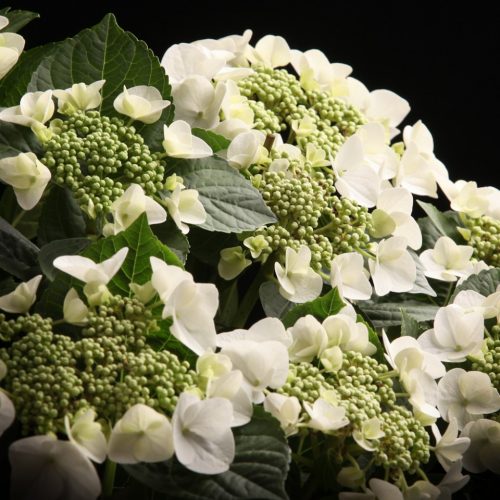 Hydrangea macrophylla ‘Benxi’ Shrubbery suitable for the rock garden rich, fresh, as preferable exposure Partial shade – Shade color White Flowering period is June – September Height 100 cm – 120 cm Density 1 potted seedlings per square meter, Diameter pot 19cm
Hydrangea macrophylla ‘Benxi’ Shrubbery suitable for the rock garden rich, fresh, as preferable exposure Partial shade – Shade color White Flowering period is June – September Height 100 cm – 120 cm Density 1 potted seedlings per square meter, Diameter pot 19cm -
Out of stock
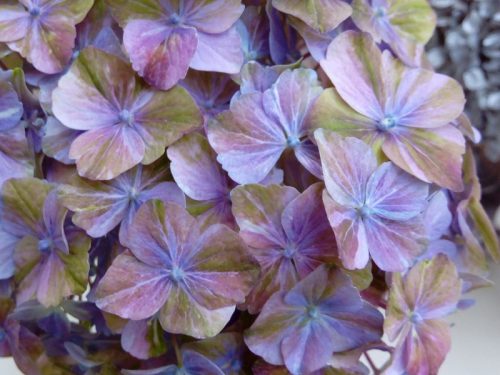 Large purple-green mophead shaped flowerheads with frilly edges when grown in neutral to alkaline soils. Position: They perform best when given a shady, cool moist root run and a sheltered aspect. Maintenance: Mophead hydrangeas require little pruning, simply thin out old stems and remove the dead flowers to a pair of plump green buds in late spring.
Large purple-green mophead shaped flowerheads with frilly edges when grown in neutral to alkaline soils. Position: They perform best when given a shady, cool moist root run and a sheltered aspect. Maintenance: Mophead hydrangeas require little pruning, simply thin out old stems and remove the dead flowers to a pair of plump green buds in late spring.- Flower Colour: Green, Purple
- Flower Type: Mophead
- Flowering Month: June, July, August, September
- Soil Type: Alkaline, Normal
- Aspect: Partial Shade
-
Out of stock
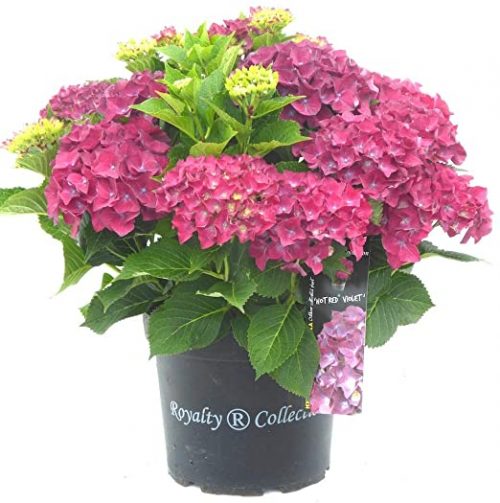 A medium sized deciduous shrub with deep purple/pink-red mophead blooms in summer above dark purple tinged green foliage, when grown in neutral to alkaline soils. Flowers in summer and may change to blue/mauve shades when grown on acidic soils or pink on neutral soils.
A medium sized deciduous shrub with deep purple/pink-red mophead blooms in summer above dark purple tinged green foliage, when grown in neutral to alkaline soils. Flowers in summer and may change to blue/mauve shades when grown on acidic soils or pink on neutral soils.- Flower Colour: Pink, Red
- Flower Type: Mophead
- Flowering Month: June, July, August, September
- Soil Type: Alkaline, Normal
- Aspect: Partial Shade
- Hardiness*: Hardy
- Foliage Type: Deciduous
- Foliage Colour: Green, Bronze/purple
- Height after 10 years*: 0.9-1.2m (3-4ft)
- Pot Size: 3 Litre
-
Out of stock
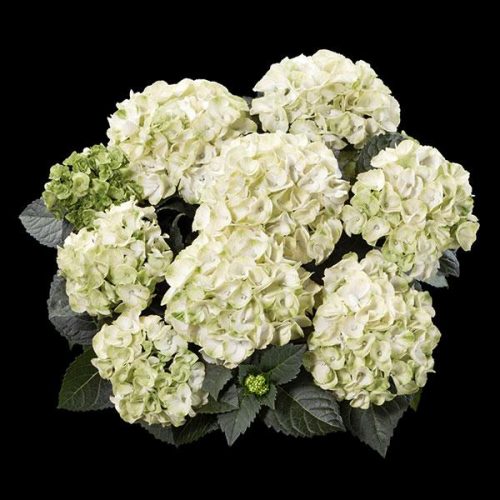 Hydrangea Macrophylla Caipirinha is a compact deciduous shrub with dark green ovate toothed leaves. During the summer it has beautiful rounded clusters of white mop head flowers fading with age to dark green with a red border around each petal at the end of the flower. Eventual height and spread up to 1.2 metres pot size: 3L
Hydrangea Macrophylla Caipirinha is a compact deciduous shrub with dark green ovate toothed leaves. During the summer it has beautiful rounded clusters of white mop head flowers fading with age to dark green with a red border around each petal at the end of the flower. Eventual height and spread up to 1.2 metres pot size: 3L -
Out of stock
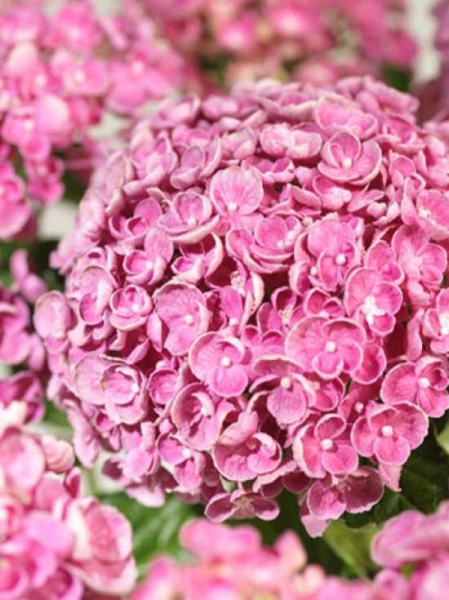
- Flowering Period:June, July, August, September
- Final height:80cm to 100cm
- Final width:80cm to 100cm
- Available:February, March, April, May, June, July, August, September, October, November
- Fragrances:lightly scented
- Use:beds/borders, for containers, as a hedge, for group plantings, as a specimen plant
- Hardiness:hardy
- Soil:moist, heavy, moderately heavy, neutral, acidic, slightly acidic
- Location:partial shade
- Flower Colour:pink, grey
- Leaf Colour:green
-
Out of stock
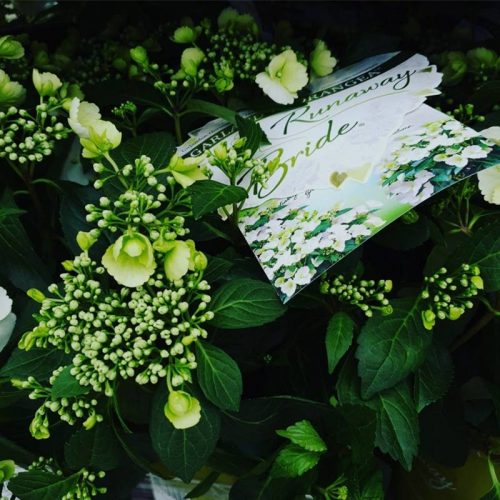 Hydrangea macrophylla Runaway Bride is a compact, small to medium-sized, vigorous, deciduous shrub, extremely floriferous, with a rounded habit and semi-trailing stems. Unusually for a hydrangea, it flowers all the way along the stems instead of just at the tips, giving it the name of Garland Hydrangea. The ovate, serrated leaves are deep green. From May to September, the shrub is covered with a profusion of pure white lace-cap flowers, often with a pale pink flush as they age; the colour is constant whatever the pH of your soil. Hydrangea Runaway Bride is excellent in large containers along a house-frontage, as well as in a border. Soil: Any moist but well-drained soil, acid to neutral preferred Position: Partial shade Season of interest: Late spring to early autumn Hardiness: Fully hardy Height: 4’ (1.2m) Spread: 4’ (1.2m)
Hydrangea macrophylla Runaway Bride is a compact, small to medium-sized, vigorous, deciduous shrub, extremely floriferous, with a rounded habit and semi-trailing stems. Unusually for a hydrangea, it flowers all the way along the stems instead of just at the tips, giving it the name of Garland Hydrangea. The ovate, serrated leaves are deep green. From May to September, the shrub is covered with a profusion of pure white lace-cap flowers, often with a pale pink flush as they age; the colour is constant whatever the pH of your soil. Hydrangea Runaway Bride is excellent in large containers along a house-frontage, as well as in a border. Soil: Any moist but well-drained soil, acid to neutral preferred Position: Partial shade Season of interest: Late spring to early autumn Hardiness: Fully hardy Height: 4’ (1.2m) Spread: 4’ (1.2m) -
Out of stock
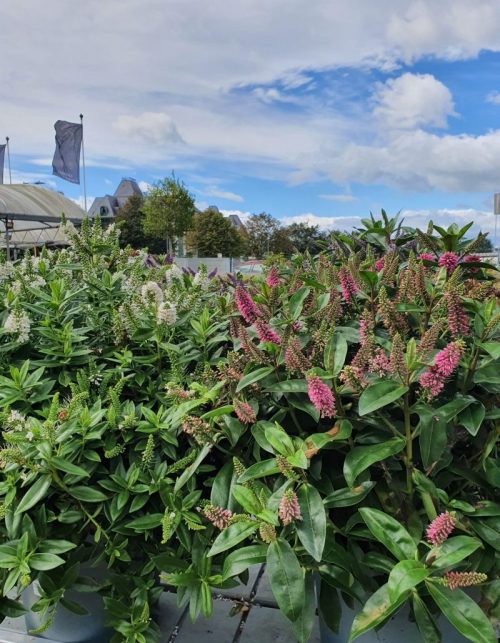 Hebe (Evergreen Veronica) is an easy to grow flowering evergreen shrub native to New Zealand and South America. Hebe plants come in many sizes ranging from dwarf shrubs, suitable for planting in patio pots and rockeries, to large hebe plants that are perfect for planting in a large garden. Many varieties of Hebe flower throughout summer and autumn - some varieties of Hebe flower during the winter. Although mostly hardy, a cold English winter can kill some types of Hebe plants. Hebes especially need to be protected from strong winds. The variegated-leafed Hebes seem to be amongst those most affected by cold winds and wintery weather. Hebes are easy to propagate from cuttings.
Hebe (Evergreen Veronica) is an easy to grow flowering evergreen shrub native to New Zealand and South America. Hebe plants come in many sizes ranging from dwarf shrubs, suitable for planting in patio pots and rockeries, to large hebe plants that are perfect for planting in a large garden. Many varieties of Hebe flower throughout summer and autumn - some varieties of Hebe flower during the winter. Although mostly hardy, a cold English winter can kill some types of Hebe plants. Hebes especially need to be protected from strong winds. The variegated-leafed Hebes seem to be amongst those most affected by cold winds and wintery weather. Hebes are easy to propagate from cuttings.FLOWERS ON A HEBE PLANT
The flowers on a Hebe shrub are small and grouped together in spikes. The colours of Hebe flowers range from white through pink, blue, lilac and purple to bright crimsons.
FOLIAGE
The leaves provide attractive year round foliage with different colours including silver and green, grey, violet, burgundy, bronze and red.BUTTERFLIES
This delightful shrub has flowers which will attract butterflies and bees to your garden.WHERE TO PLANT A HEBE SHRUB
A Hebe is a good all year round foliage plant. Its flowers can provide colour throughout all growing seasons. Grown in mixed plantings of summer annuals the flowers of a Hebe add to the floral display whilst the shape and form of the bush give a sense of stability. Hebe can be grown as an informal hedge - but if clipped back too hard it will not produce so many flowers. The smaller hebes make good ground cover plants or add interest to a rockery. A Hebe should be planted in a well drained soil and, if possible, in a position protected from wind.HOW TO PLANT A HEBE
- Before planting a Hebe soak the roots in water
- Dig a hole twice as wide as the container that the Hebe is in.
- Add a spadeful of compost and some general purpose fertiliser to the soil taken from the hole that you have dug.
- Remove the plant from the pot - tap the sides and base of the container to release the Hebe.
- Place the hebe plant into the hole.
- Fill in the space around the plant with the soil and compost mixture and gently firm with your fingers or tread in.
- Water in with plenty of water.
- Mulch around the base of the plant to help to conserve moisture.
-
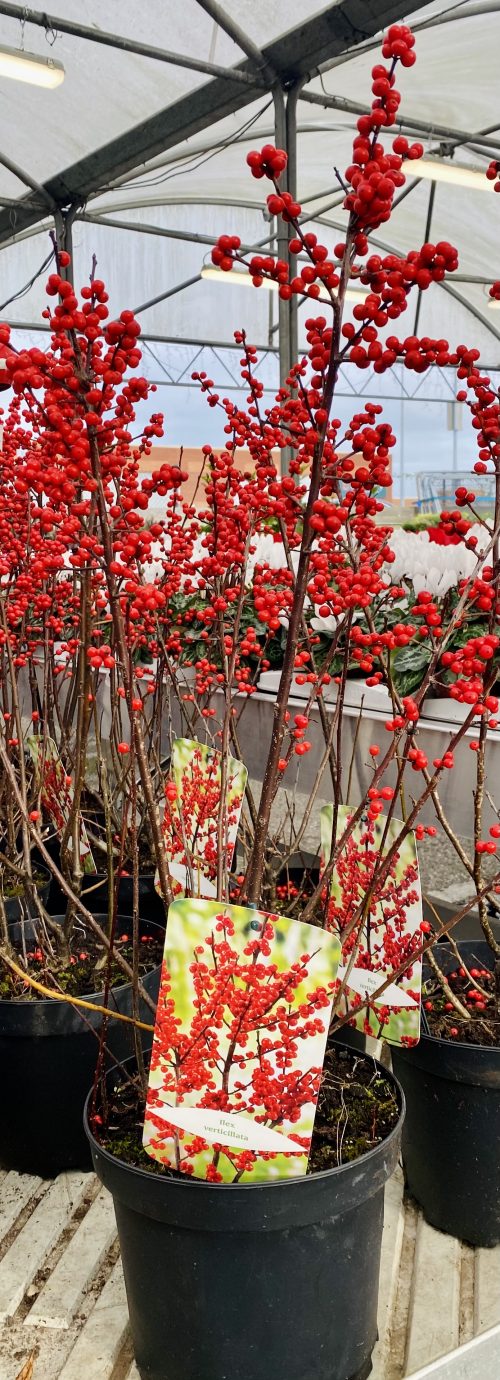 This Ilex Verticillata has magnificent red berries from autumn through to winter. It can be placed in full sun or semi shade. It is 200cm approx. and pruning is not recommended.
This Ilex Verticillata has magnificent red berries from autumn through to winter. It can be placed in full sun or semi shade. It is 200cm approx. and pruning is not recommended. -
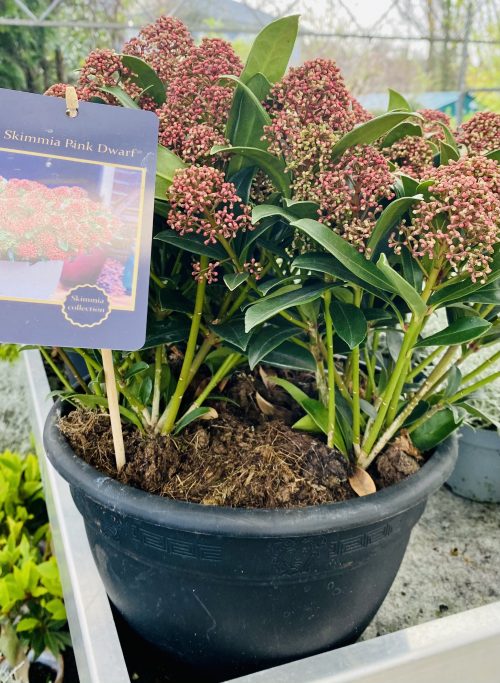 The Pink Dwarf is a compact growing Skimmia. Pink flower buds form in the autumn and and open to reveal pale pink flowers between March and May. Place in full sun/shade.
The Pink Dwarf is a compact growing Skimmia. Pink flower buds form in the autumn and and open to reveal pale pink flowers between March and May. Place in full sun/shade. -
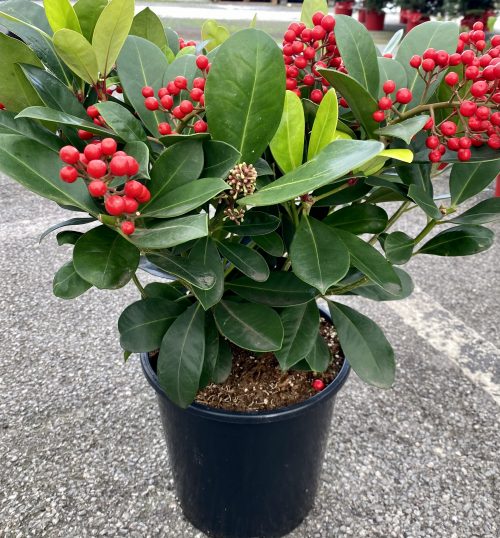 Skimmia Japonica 'Chameleon' has beautiful red berries right up to March/April and then white flowers will bloom for the summer. Perfect in sun or shade and can be kept in a pot or planted into the ground.
Skimmia Japonica 'Chameleon' has beautiful red berries right up to March/April and then white flowers will bloom for the summer. Perfect in sun or shade and can be kept in a pot or planted into the ground. -
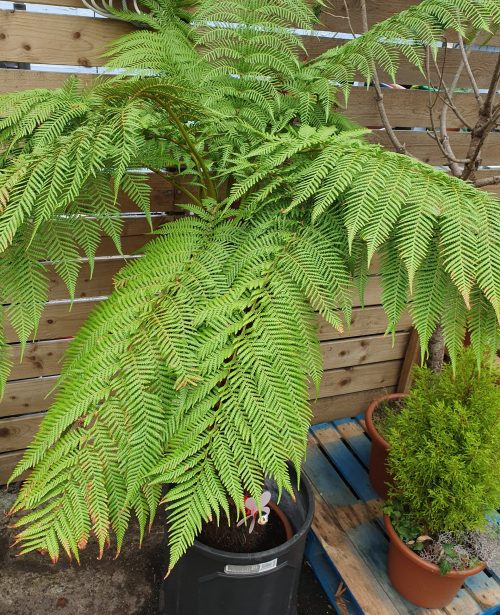
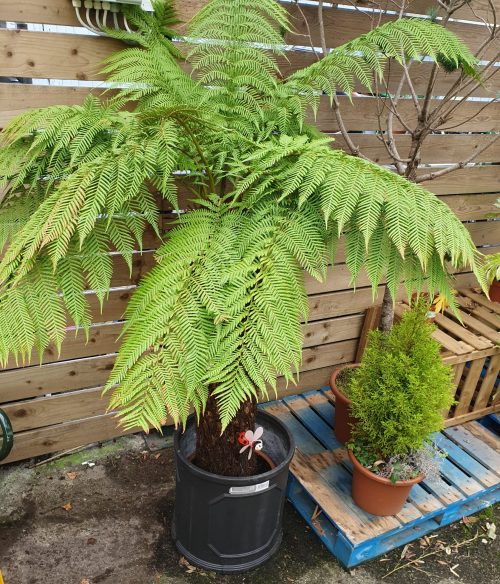 Native to coastal parts of Australia, Dicksonia antarctica is a magnificent, slow-growing, evergreen tree-fern (deciduous in colder areas) and one of the easiest to grow. The brown, fibrous ‘stem’ slowly grows taller, crowned by a rosette of beautiful, glossy, deep green fronds up to three metres long – a wonderfully architectural plant. Winter protection essential in all but the mildest areas – wrap the top of the ‘stem’ in fleece and protect the growing point in the crown with straw or similar insulation, and if pot-grown, bring inside or insulate the pot. Water the stem in hot weather; do not water the crown in winter. Site: Sheltered, sheltered coastal Soils: Moist but well-drained, acid to neutral soil Position: Partial shade or dappled shade Season of interest: Most of the year Hardiness: Frost-hardy Height to 13’ (4m) Spread to 13’ (4m)
Native to coastal parts of Australia, Dicksonia antarctica is a magnificent, slow-growing, evergreen tree-fern (deciduous in colder areas) and one of the easiest to grow. The brown, fibrous ‘stem’ slowly grows taller, crowned by a rosette of beautiful, glossy, deep green fronds up to three metres long – a wonderfully architectural plant. Winter protection essential in all but the mildest areas – wrap the top of the ‘stem’ in fleece and protect the growing point in the crown with straw or similar insulation, and if pot-grown, bring inside or insulate the pot. Water the stem in hot weather; do not water the crown in winter. Site: Sheltered, sheltered coastal Soils: Moist but well-drained, acid to neutral soil Position: Partial shade or dappled shade Season of interest: Most of the year Hardiness: Frost-hardy Height to 13’ (4m) Spread to 13’ (4m)